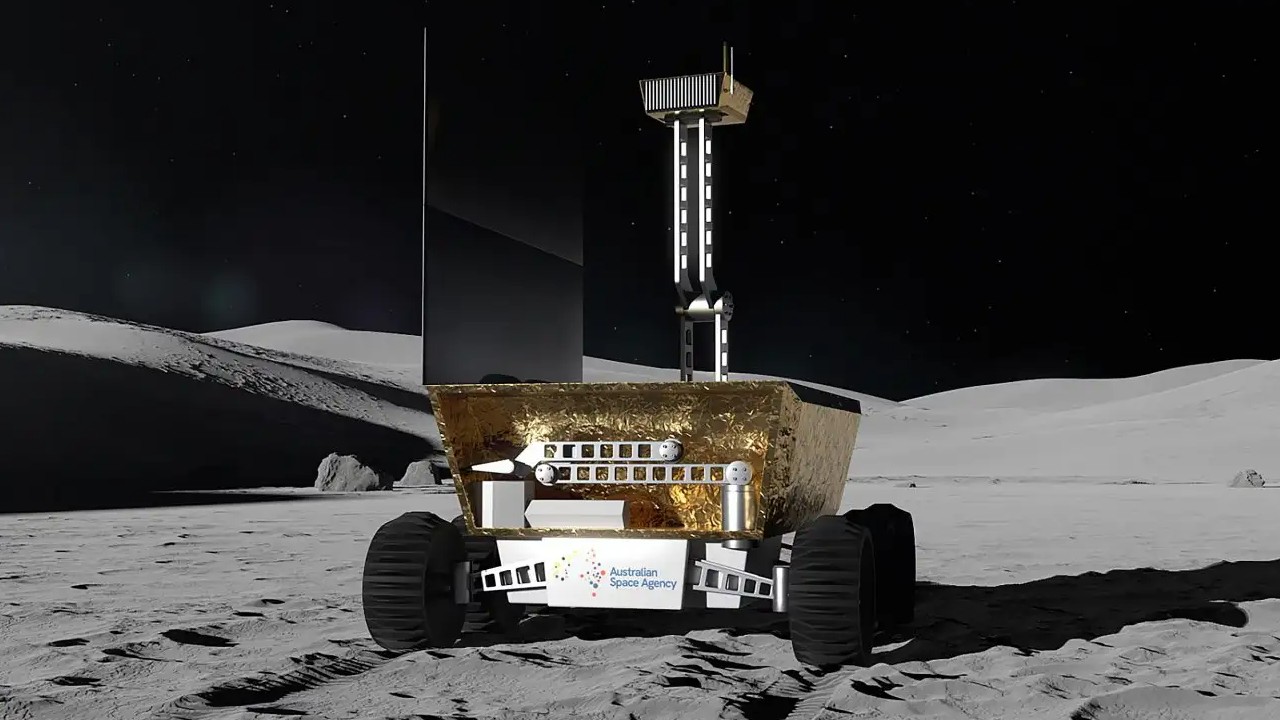Australia votes to name its 1st moon rover 'Roo-ver'
Australia's first lunar rover will be called "Roo-ver" following a public vote to name the space vehicle.

Australia's first lunar rover will be called "Roo-ver" following a public vote to name the space vehicle.
The Australian Space Agency is building a semi-autonomous rover that will launch to the moon as early as 2026 in partnership with NASA and the agency's Artemis program. Roo-ver will collect lunar soil samples, from which NASA will attempt to extract oxygen — a key step toward establishing a sustainable human presence on the moon and producing rocket fuel to support future missions to Mars.
The name Roo-ver was chosen from more than 8,000 entries submitted to Australia's rover-naming competition. The shortlist of names — which included "Coolamon," "Kakirra," "Mateship" and "Roo-ver" — were subject to a public vote between Nov. 20 and Dec. 1, during which nearly 20,000 Australians voted on their favorite name.
Related: Australia launching moon rover on NASA Artemis mission as soon as 2026
"Our lunar rover deserves to be named after something iconically Australian, reflecting the Aussie spirit as we launch into this new endeavor," Siwa from New South Wales, who submitted the name "Roo-ver," said in a statement from the Australian Space Agency. "A kangaroo is part of the Australian Coat of Arms and it's time for Australian science to take the next leap all the way up into space."
Roo-ver claimed 36 percent of the votes, beating out the other three shortlisted names. Other popular entries included Matilda, Bluey, Skippy, Wombat, Walkabout and Rover McRoverface. There were also many suggestions to name the rover after notable Australians, including Bert 'Moonface' Newton, Steve Irwin, Sam Kerr, Red Dog, Mad Max and Blinky Bill, the Australian Broadcasting Corporation (ABC) reported.
Ultimately, the Australian Space Agency organized a panel of internal and external judges to assess the submissions based on their relevancy, creativity and rationale, as well as whether they were short, easily identifiable and inspirational, according to the ABC.
Breaking space news, the latest updates on rocket launches, skywatching events and more!
Weighing roughly 44 pounds (20 kilograms), Roo-ver is expected to land near the lunar south pole, where it will spend 14 Earth days (or about half of one lunar day) scouring the moon's surface to collect soil known as regolith. NASA will then attempt to extract oxygen from the samples using separate equipment that will be sent to the moon with the rover.
While the rover will be largely operated remotely from Earth, it will have the ability to perform some lunar tasks by itself. This will help protect the rover in the event the harsh conditions of the lunar environment interfere with communications.
"When you're talking about the moon, you could be talking about several seconds delay simply due to the distance from Earth. Additional signal problems can occur based on a number of factors, such as electromagnetic interference caused by solar radiation," Newton Campbell, Director of Space Programs for AROSE, which is one of the two consortiums working on the rover's design, told ABC. "So you have to introduce aspects of autonomy that effectively help guide the robot in times of significant latency, to continue operation and make sure the rover is maintaining its own safety, as well as with respect to the environment."

Samantha Mathewson joined Space.com as an intern in the summer of 2016. She received a B.A. in Journalism and Environmental Science at the University of New Haven, in Connecticut. Previously, her work has been published in Nature World News. When not writing or reading about science, Samantha enjoys traveling to new places and taking photos! You can follow her on Twitter @Sam_Ashley13.
